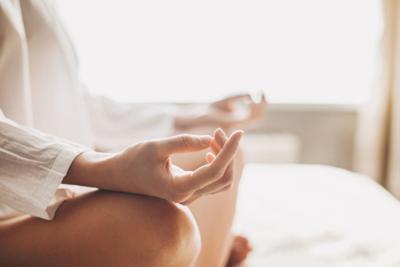Mindfulness has certainly become a buzzword over the past few years.
With trends such as the “clean girl aesthetic” circulating social media, many trends have focused on self-care practices, one of which being meditation. These trends have mindfulness practices as part of the lifestyle like bullet journaling or even five-minute morning meditation.
With the rise of influencer marketing, meditation and mindfulness are promoted as tools to make you more productive — if you buy a specific app or get a specific journal, you will gain inner peace. Because that’s the nature of influencer marketing at the moment: aestheticize, promote, consume.
However, meditation and mindfulness aren’t things to be bought and sold. They also aren’t about the individual, at least not solely. In the past and their cultures of origin, meditation was used to disconnect and reconnect with “oneness” or the world or the community or the spirit or nature — if you prefer.
I don’t think people engaging in or promoting meditation practices are doing it with any sort of malice. Tools in meditation are important to guide us into the present moment. Things like focusing on breathing, a candle flame, each point of the feet as we walk or birds chirping nearby can act as focal points and anchor us to the present. Plus, resources like guided online meditations make the practice accessible. However, through our consumerist culture, we have lost the value of meditation.
So, what is meditation really? Meditation is about being in the moment through conscious, nonjudgemental awareness. That word conscious might sound a little silly. I mean of course you have to be awake to be aware. And yet a lot of our day is spent being conscious, but not aware.
It’s like those times when you are working on a project, and you are so focused on that project and the next step and the step after that. Then all of a sudden you realize your back hurts, where did that come from? It’s almost like it came out of nowhere. But it didn’t.
The muscles in the back were gradually getting tired and achy, but because we were so focused on what was next and not aware of what we were experiencing in the moment, we missed it.
One of the other misconceptions about meditation is that you must feel at peace or relaxed. While these things can be a part of meditation, it doesn’t mean you “failed” if you didn’t experience them. Any thoughts and emotions are welcomed. It’s through awareness and nonjudgement that feelings of peace or relaxation can come.
A common way to explain this practice of awareness and nonjudgement is imagining you are sitting on a rock, watching a stream flow by. Each thought is like the water in that stream. You see it, acknowledge it, and let it drift — without engaging. When you feel an emotion, you notice where it is in the body and let it fade. Like the stream, you are seeing and letting it go. There’s no effort to build a dam. There is no splashing around in the water. Just observing.
When we aren’t in a state of conscious awareness, we have a habit of snowballing with our thoughts and emotions. We see it, identify it and we add to it.
Maybe you stub your toe. You feel the pain, but instead of stopping there, you think about how much it hurts, how inconvenient it is to feel this way and how it is going to affect the rest of the day. Maybe we even think this is a sign: it’s just going to be a bad day.
We hold on to that mindset, those thoughts and emotions. Each time something else comes up, instead of letting it pass, we engage with it and add fuel to the fire. Pretty soon our emotions take over and we start snapping at other people. This is where meditation comes back to benefiting others, and not just us.
When we regularly practice, we are also practicing emotional regulation. Plus, once we offer nonjudgement to ourselves, it’s easy to offer it to other people as well. Overall, we can start to see less division and more connection among each other.
“When you plant lettuce, if it does not grow well, you don't blame the lettuce,” Vietnamese monk and peace activist Thich Nhat Hanh explained. “You look for reasons it is not doing well. It may need fertilizer, or more water, or less sun. You never blame the lettuce. Yet if we have problems with our friends or family, we blame the other person. But if we know how to take care of them, they will grow well, like the lettuce. Blaming has no positive effect at all, nor does trying to persuade using reason and argument. That is my experience. No blame, no reasoning, no argument, just understanding. If you understand, and you show that you understand, you can love, and the situation will change.”


